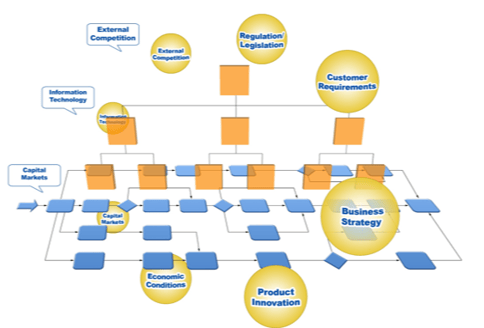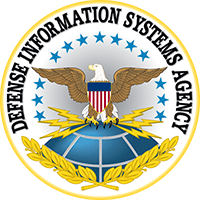Introduction
Inteq’s BPR360/Framework™ provides the conceptual blueprint for business transformation – engaging people, processes and technology across the enterprise.
Transformational Business Process Reengineering (BPR) disrupts existing business processes - workflows, roles, business policies and procedures, supporting technology and underlying business rules.
Transformational BPR requires new ways of thinking – doing new things in new ways. BPR results in fundamental changes in end-to-end business processes.
Transformational BPR is essential to organizations that encounter a major shift or change in an organization’s business environment – such as competition, regulatory change or economic conditions that requires an organization to rapidly adapt - or risk going into decline.
Transformational BPR results in highly effective, efficient, scalable business processes – that drive enterprise value creation, competitiveness and innovation.
The Business Platform (People, Processes and Supporting Technologies)
Organizations create sustainable business value via the organization’s business platform. An organization’s business platform are the people, processes and supporting technologies integrated with and across the tactical, operational and strategic layers of the organization.
To embrace and successfully manage the chaos of continual shifts and changes in an organization’s business environment requires a business platform with six integral characteristics.
Accordingly, the goal of business transformation is to transform an organization’s as-is business platform to a sustainable future state business platform that manifests six integral characteristics.
A business platform that manifests these six characteristics can embrace and manage chaos and sustain the continual evolution and pace of change.
The six integral characteristics of a sustainable business platform are:
High Performing
Effective in producing customer value and efficient in the utilization of resources to create customer value.
Scalable
Enables business revenue to grow exponentially, while the staffing of the platform grows linearly / incrementally.
Extensible
Enables new business functionality (activities, procedures, technology, mechanisms, roles, etc.) to be added quickly and seamlessly to the platform.
Adaptable/Nimble
Enables proactive early identification and rapid effective response to the shifts and changes in the business environment.
Robust
Stability of the platform at the tactical, operational and strategic layers to enable an organization to leverage its strengths (and bolster weakness) to exploit opportunities and mitigate threats from shifts and changes in the business environment.
Transparent
Enables the appropriate stakeholders to accurately, thoroughly and unambiguously understand the components and moving parts at each layer of the platform.
Business Transformation
Business transformation is difficult. Most organizations struggle to achieve transformational and sustainable change regardless of the amount of time and resources expended on the effort.
The primary reasons that business transformation initiatives such as Business Process Reengineering (BPR) often fail to deliver transformative and sustainable change are:
1. A myopic focus on the tactical workflow layer of an organization without fully engaging the operational and strategic layers;
2. Superficial mapping, high-level analysis and limited scope - rather than detailed and deep analysis across the enterprise.
3. Insufficient experience in recognizing the underlying patterns across the enterprise and among the layers that need to be disrupted and reengineered.
4. Sub-optimization of the opportunity backlog – informal prioritization of the opportunities based subjective factors rather than objective prioritization based on value drivers.
5. Passive rather than proactive development, implementation and on-going refinement of the opportunities selected from the backlog.
The solution is to engage the organization from 360°.
This level of engagement requires analyzing people / roles, process and technology at the tactical, operational and strategic layers – and analyzing how people, processes and technology engage one another across the enterprise and among the layers.
Inteq’s BPR360/Framework™ - Overview
Inteq’s BPR360/Framework™ is depicted by the illustration below.

The BPR360/Framework™ was developed and refined over many years of experience from numerous business transformation initiatives – from organizational restructuring to enterprise business process reengineering (BPR) to incremental business process improvement (BPI) across the spectrum of industries around the world.
Organizations and businesses provide Inteq access to information in a way that most people never see. We are invited to go deep inside organizations to uncover, understand and reengineer complex business concepts that form the foundation of these organizations. That’s our core business.
We analyze organizations from multiple perspectives – the tactical, operational and strategic layers. From this 360º view, where others see chaos, we see patterns. Pattern recognition is a core skill that Inteq has refined over many years – it’s an invaluable tool for success in business transformation.
Over time, we have recognized and distilled patterns that occur repeatedly across industries - regardless of the nature of the business. These recurring patterns are the foundation of Inteq’s BPR360/Framework™ - the conceptual blueprint for business transformation.
Business Process Reengineering (BPR) vs. Operational Improvement
BPR is transformational. BPR initiatives disrupt existing business processes - workflows, roles, business policies and procedures, supporting technology and underlying business rules. BPR requires new ways of thinking – doing new things in new ways. BPR results in fundamental changes in end-to-end business processes.
Operational improvement initiatives are narrower in scope and result in incremental refinement and improvement of work activities, procedures, business policies, workflows and technology at the functional/departmental level. Operational improvement initiatives have specific tactical objectives (e.g. Streamline the Handoff from Sales to Customer Billing).
Both BPR initiatives and operational improvement initiatives are important and can execute in parallel. Operational improvement initiatives provide the essential ongoing continual refinements that improve operational effectiveness. BPR results in the fundamental shifts that enable an organization to achieve strategic objectives.
Subscribe to my blog | Visit our Knowledge Hub
Visit my YouTube channel | Connect with me on LinkedIn
Check out our Business Analysis Training Courses and Consulting Services




















